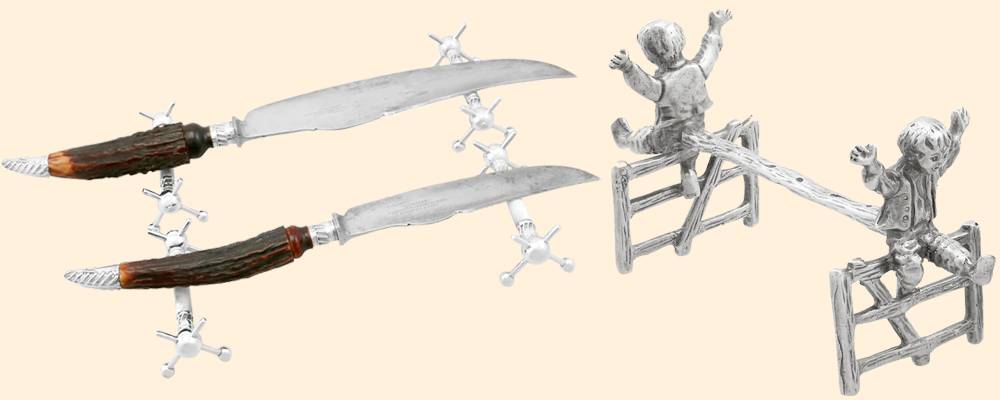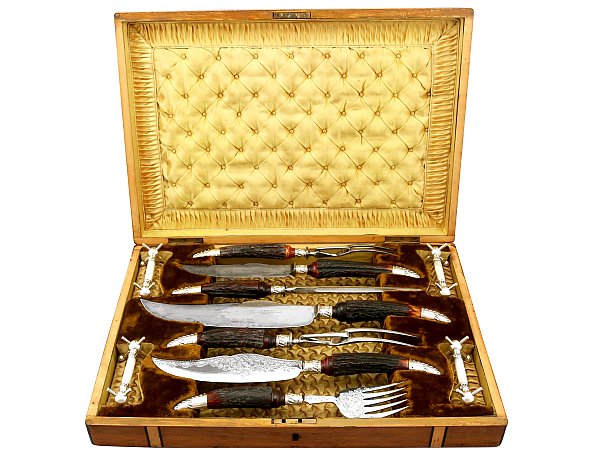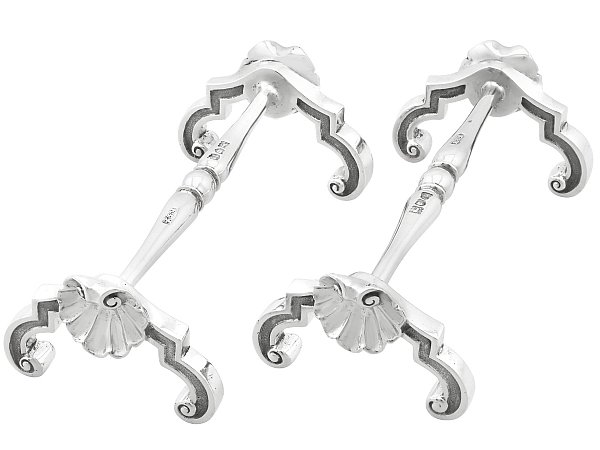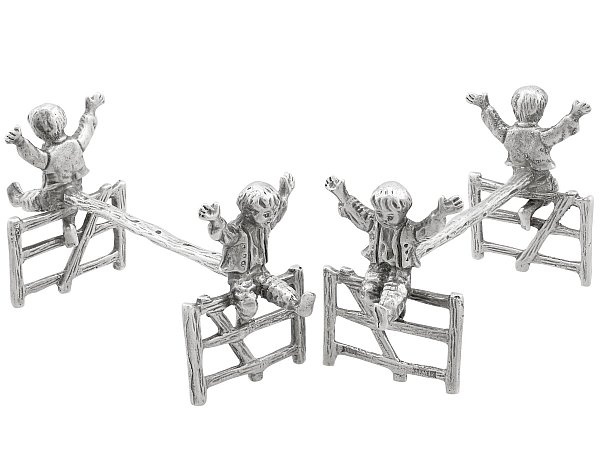Silver Knife Rests
Antique and Vintage Silver Knife Rests for Sale
AC Silver is delighted to offer for sale a fine range of sterling silver knife rests, available in pairs or as part of more comprehensive silverware sets.
This refined collection of silver knife rests feature pieces items crafted during the Georgian, Victorian and Edwardian eras, as well as some twentieth century vintage items.
Andrew Campbell, using his 40 years’ experience within the antique industry, handpicks all vintage and antique silverware for sale.
All of the silver knife rests at AC Silver come with free and insured worldwide shipping and a 14 day return policy.

Knife rests are difficult for modern collectors to find, largely due to their size and relative fragility. Before the 1780s, knife rests were crafted from porcelain, and as such not many examples of these can be found today.
Their design saw a change at the turn of the 19th century, going from triangular sections brought together by drawn wire, to single bars of silver closed off at the ends by ‘x’ shapes, providing an ideal place for knives to be positioned to avoid accidents. This basic design continues to be the standard today, with some – more adventurous novelty examples – being more dramatic.
American examples especially are more flamboyant, often featuring animals like bears and pugs. These examples are rare to come by and are highly valuable collectables. Some British examples match up to their American counterparts when it comes to novelty, though these are also difficult to find.





